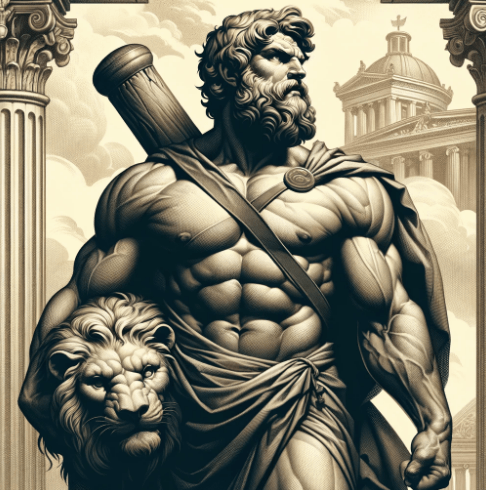Heracles, also known as Hercules in Roman mythology, epitomizes the heroic spirit in the face of adversity. His remarkable exploits and unparalleled strength are celebrated in numerous myths, but it is the 12 Labors that truly embody his enduring legacy.
These labors were not merely feats of strength; they were profound challenges that required a blend of physical prowess, mental agility, and indomitable will. They were assigned to him as a means to atone for a past wrongdoing, each task more daunting than the last, bringing him face-to-face with formidable beasts and insurmountable odds.
Read on to learn all about the 12 labors of Heracles.
1. Confronting the Nemean Lion: A Test of Strength

In the rugged valleys of Nemea lived a lion with an impenetrable hide, causing terror and destruction. Heracles’s first labor was to confront this fearsome beast. Using his wit, he lured the lion into a cave with two entrances, blocking one and facing the lion in the other.
After discovering his weapons were ineffective, Heracles wrestled the lion, eventually strangling it to death, a testament to his incredible strength. He skinned the lion using its own claws and wore its hide as armor, symbolizing a triumph over the impossible.
2. The Hydra of Lerna: A Battle Against Regeneration
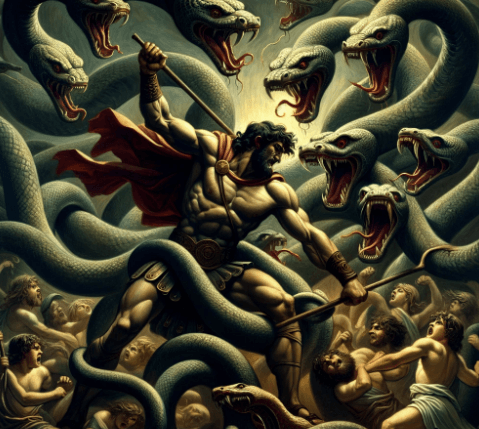
The Lernaean Hydra was a monstrous serpent with multiple heads that regrew when cut off. Heracles ventured into the swamps of Lerna, where he confronted the beast. With each head he severed, two more sprang forth, making the task seem endless.
Assisted by his nephew Iolaus, Heracles devised a clever strategy. As he cut off each head, Iolaus used a torch to cauterize the wound, preventing regeneration. This labor illustrated Heracles’s ability to combine brute force with cunning to overcome even the most dire situations.
3. Capturing the Ceryneian Hind: A Divine Chase

The Ceryneian Hind was a radiant creature with golden antlers, dedicated to the goddess Artemis. Capturing this swift and sacred animal was a labor that tested Heracles’s persistence and reverence for the divine.
After a year-long chase, he finally caught the Hind, pledging to return it unharmed. This task highlighted Heracles’s respect for the gods and creatures of the world, balancing the pursuit of his objective with a commitment to honor and duty.
4. Seizing the Erymanthian Boar: A Grueling Capture
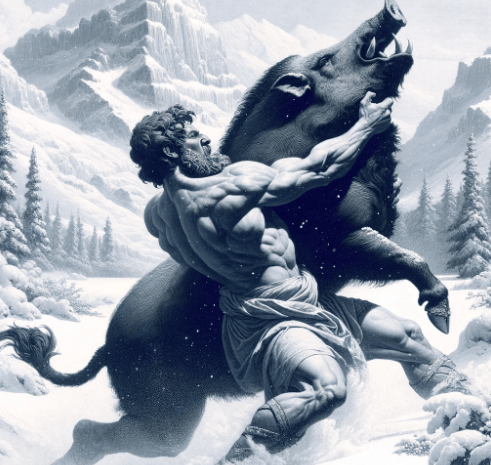
In the wintry mountains lived the ferocious Erymanthian Boar, rampaging through the countryside. Heracles was tasked with capturing this wild beast alive. He chased the boar through thick snow, using the harsh environment to his advantage. Once the boar grew exhausted from the chase, Heracles captured it.
This labor demonstrated Heracles’s strategic use of natural elements and his physical resilience, enduring the cold and fatigue to bring the boar back to Eurystheus.
5. Cleansing the Augean Stables: Ingenious Problem-Solving
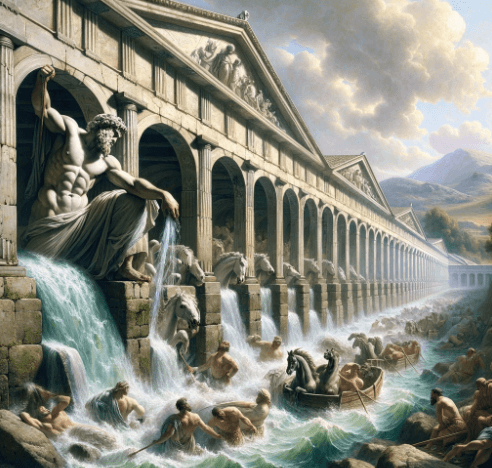
King Augeas had stables that housed thousands of cattle and had not been cleaned for years. The task seemed insurmountable: to clean the filth in a single day. Heracles, in a stroke of genius, rerouted two nearby rivers to flow through the stables, washing away years of accumulated waste.
This labor was a testament to his problem-solving skills, showcasing that sometimes, the most effective solutions are those that leverage the environment and resources at hand.
6. The Stymphalian Birds: Overcoming the Man-Eaters
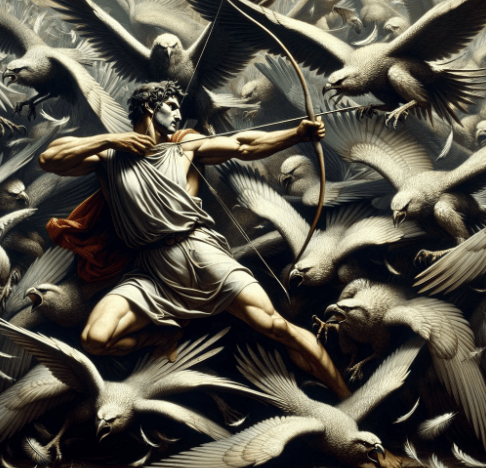
The Stymphalian Birds were vicious creatures with beaks of bronze, their feathers sharp as arrows. They terrorized the town of Stymphalos, and Heracles was tasked with driving them away. Using a rattle given to him by Athena, he startled the birds into flight and then shot them down with his arrows.
This labor required precision and adaptability, as Heracles had to find a way to counter the threat from a distance, showcasing his tactical acumen.
7. Capturing the Cretan Bull: Wrestling a Rampant Beast
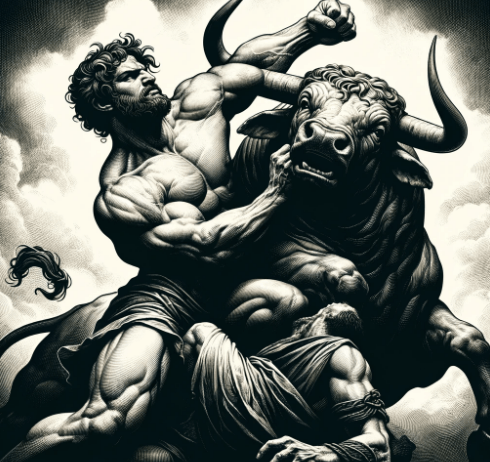
The Cretan Bull, a magnificent but fearsome creature, roamed the island causing destruction. Heracles sailed to Crete, where he confronted and wrestled the bull, showcasing his incredible strength and determination.
The capture of the bull was not just a physical endeavor but a symbol of Heracles’s ability to subdue chaos and restore order, reflecting the enduring themes of heroism and balance.
8. Taming the Mares of Diomedes: A Grim Task
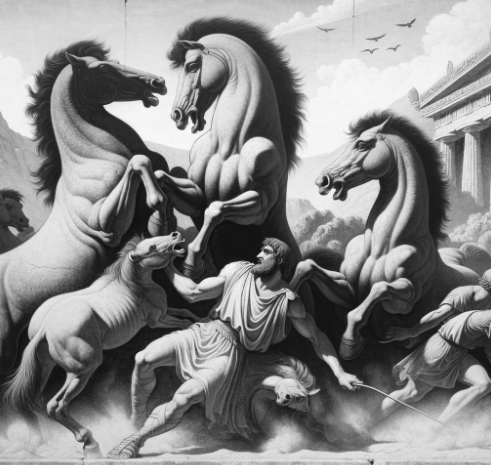
Owned by King Diomedes, the man-eating Mares of Thrace were a symbol of untamed nature and savagery. Heracles was tasked with taming these wild beasts. After overcoming the mares’ guardians, he turned their ferocity back upon their master, subduing the mares in the process.
This labor underscored the dark and often grim realities of his quests, where success required facing brutality with bravery.
9. Acquiring the Belt of Hippolyta: A Diplomatic Approach Gone Awry
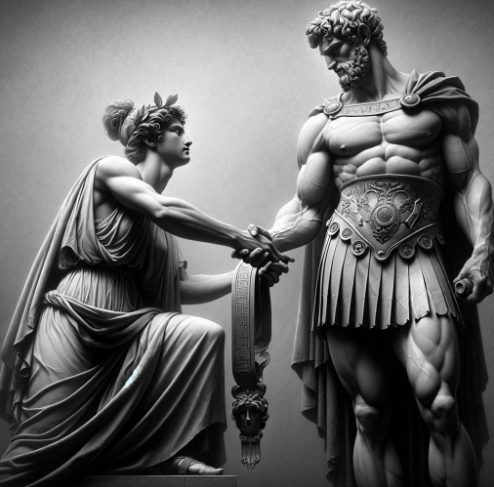
Queen Hippolyta of the Amazons possessed a girdle that Eurystheus’s daughter desired. Initially, Heracles’s charm and diplomacy prevailed, and Hippolyta agreed to hand over the belt. However, Hera’s machinations led to a misunderstanding, and a battle ensued.
Heracles’s ability to navigate through complex situations, adapting from diplomacy to combat, underscores the multifaceted nature of his character and the unpredictability of his labors.
10. Retrieving the Cattle of Geryon: An Epic Journey
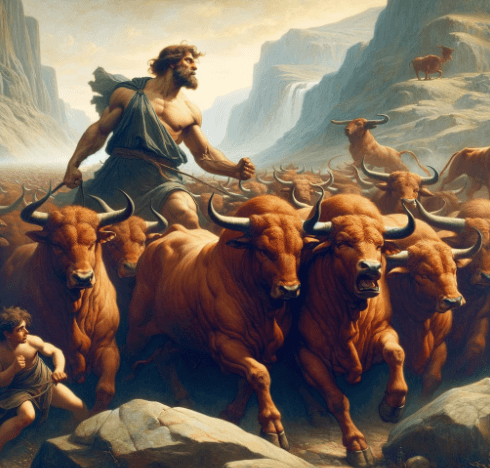
Heracles’s journey to fetch the cattle of the giant Geryon was an odyssey filled with obstacles. He traversed to the ends of the earth, encountering fierce resistance from Geryon and his guards.
This labor was not merely a physical challenge but an epic journey that tested his endurance, courage, and resolve, emblematic of the hero’s path that takes one through trials and tribulations to achieve greatness.
11. The Apples of the Hesperides: A Trial of Cunning

The golden apples of the Hesperides were objects of divine beauty and power, guarded by a formidable dragon, Ladon. Heracles’s quest for the apples demanded more than strength; it required cleverness and the ability to negotiate with the titan Atlas.
This labor highlights the intellectual aspect of heroism, where brawn must be matched with brain to overcome challenges that are not merely physical but require a deeper understanding and strategy.
12. Capturing Cerberus: Venturing into the Underworld
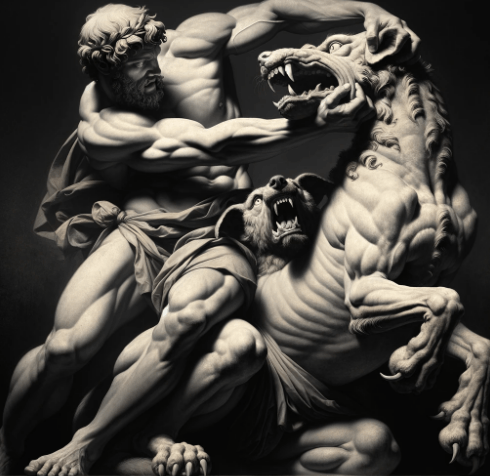
The final and most daunting labor was to capture Cerberus, the three-headed guardian of the underworld. This task took Heracles into the realm of the dead, a journey fraught with peril and profound symbolism. Capturing Cerberus was as much a spiritual conquest as it was a physical one, marking the culmination of his labors and his transcendence into legend.
By facing death itself, Heracles completed his transformation from a man into a myth, securing his place among the stars as a symbol of eternal strength and courage.
Get in Touch
Thank you for reading our article about the labors of Heracles. If you enjoyed this, you might also enjoy reading about another Greek hero, Perseus.
For any enquiries, please contact me at richard@mythologyplanet.com, or leave a message in the comment section below.
For a video representation of the labors of Heracles, check out this great YouTube video by Ted Ed.
